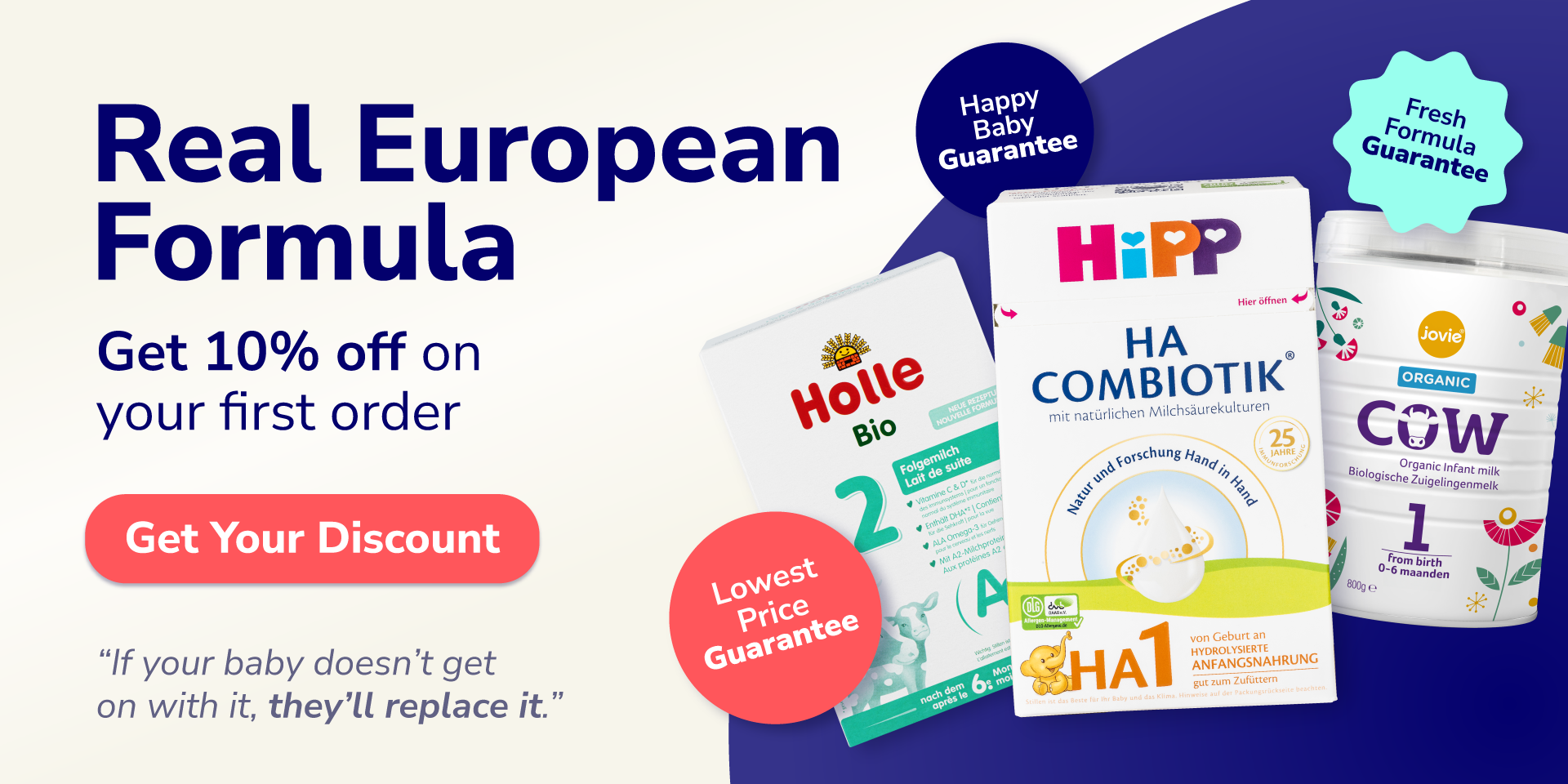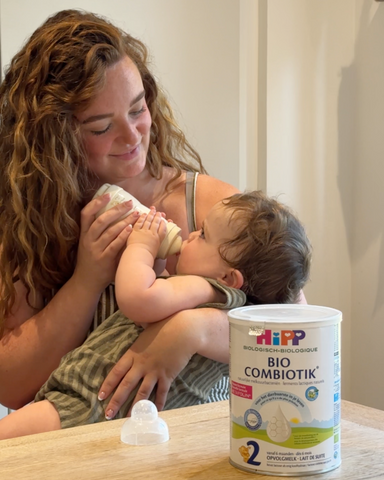Is European formula really closer to breastmilk?

Written by
ZOF Support
Published on
November 07, 2025

If you’ve read anything about European formula (especially organic European formula), you’ve probably seen this mentioned: it’s closer to breastmilk than standard formula.
But what does this actually mean, and is it true?
We often say that our products are ‘closer to breastmilk’ because that’s what we believe the science tells us. EU regulations are specifically designed to make sure that European baby formula is as breastmilk-like as possible.
In this blog, we’ll go into exactly what that means, including:
-
What’s so good about breastmilk and why formula should imitate it.
-
The exact ways in which European formula is closer to breastmilk.
-
What types of formula are especially natural.
What’s so good about breastmilk?
Breastmilk is the gold standard of infant nutrition. It provides everything babies need, in the proportions they need it in.
Here’s are just some of the reasons breastmilk is ideal:
-
High natural lactose content. Lactose is the primary carb in breastmilk – and in other mammal milk too. Lactose helps babies absorb other nutrients (including calcium) and is great for digestion.
-
Immune support. Breastmilk contains natural antibodies that give babies protection against common illnesses – especially important while they develop their own immune systems.
-
Bioactive compounds. These include DHA, oligosaccharides and milk fat globule membrane. They’re not nutrients in the way that vitamins (for example) are – they’re compounds that actually affect the way babies develop. For example, DHA helps babies’ eye development.
-
Adaptation. Breastmilk adapts to meet babies’ needs as they grow, since the needs of an active, walking 12 month old are very different to those of a tiny, sleepy newborn.
All this makes breastmilk pretty powerful stuff. But that doesn’t mean you can’t replicate much of this in formula.
How European formula mimics breastmilk
European regulations around infant formula are the world’s strictest, and are designed specifically to match the nutritional profile of breast milk.
EU regulations include:
-
Minimum levels of DHA (an omega-3 fatty acid essential for brain and eye development)
-
Minimum levels of lactose. EU formula must provide at least 30% of its calories from lactose, rather than other, cheaper carbs.
-
No corn syrup or simple sugars. Some formulas make up for a lower lactose content by including other forms of sugar. But these can spike blood sugar in babies, so the EU bans them.
-
No soy (other than in specialist formulas). Soy can be used outside Europe as an extra protein source or stabilizer. But it’s thought that the hormones in soy could be damaging, so the EU bans it.
-
Strict rules on nutrients so that it contains all the vitamins and minerals babies need, in the right quantities.
-
Protein content regulations. Breastmilk changes its protein composition naturally as babies get older, with a higher level of easily-digestible whey protein when they’re newborns. EU rules set limits and minimums for protein content at different age stages.
-
No GMOs, pesticides or synthetic hormones. The use of all of these is pretty common in industrial farming, especially in North America. But all of them have the potential to be harmful to growing bodies and brains, and so they’re banned in European baby formula.
Beyond the rules…how some EU formulas do more
EU regulations around formula are complex and pretty restrictive. But they mean that any formula made in Europe is one you can have confidence in. When you buy a European formula, you know that it has to meet extensive minimum quality requirements.
Of course, the FDA and other regulatory bodies also have minimum quality requirements – but none are as extensive as those in the EU.
There’s also the fact that many EU formulas go far beyond EU regulations. For example:
-
Organic formulas. The majority of the EU formulas in our store are certified organic by the EU. For example, all HiPP and Holle formulas are organic. This means that they’ll use milk from organically-raised animals, which may result in an even better nutritional profile.
-
Starch-free formulas. As we’ve mentioned, EU formulas provide most of their carbs from lactose. But some – such as Kendamil – use especially high lactose milk, so they don’t need to add any extra carbs in the form of starch. This can mean they’re especially gentle and easy to digest.
-
Goat’s milk formulas. Many EU formulas use goat’s milk, rather than cow’s milk. Goat’s milk contains the same type of protein as breastmilk – the A2 protein. Which means they’re a great option for sensitive tummies.
Does all this mean that European formula is the best choice for your baby?
It could well be. We should say that there are some non-European formulas that are gentle and natural, with high levels of nutrition.
But the key difference is this: when you choose European, you have 100% confidence that your baby’s formula meets the EU’s high minimum standards. And you know that those standards are science-based, and specifically aimed at making sure that formula is as close to breastmilk as it can be.
Which all means peace-of-mind – and that’s important.
Want to see which European formula might be best for your baby? You could:
Get 3 personalized formula recommendations, with the Formula Finder.




